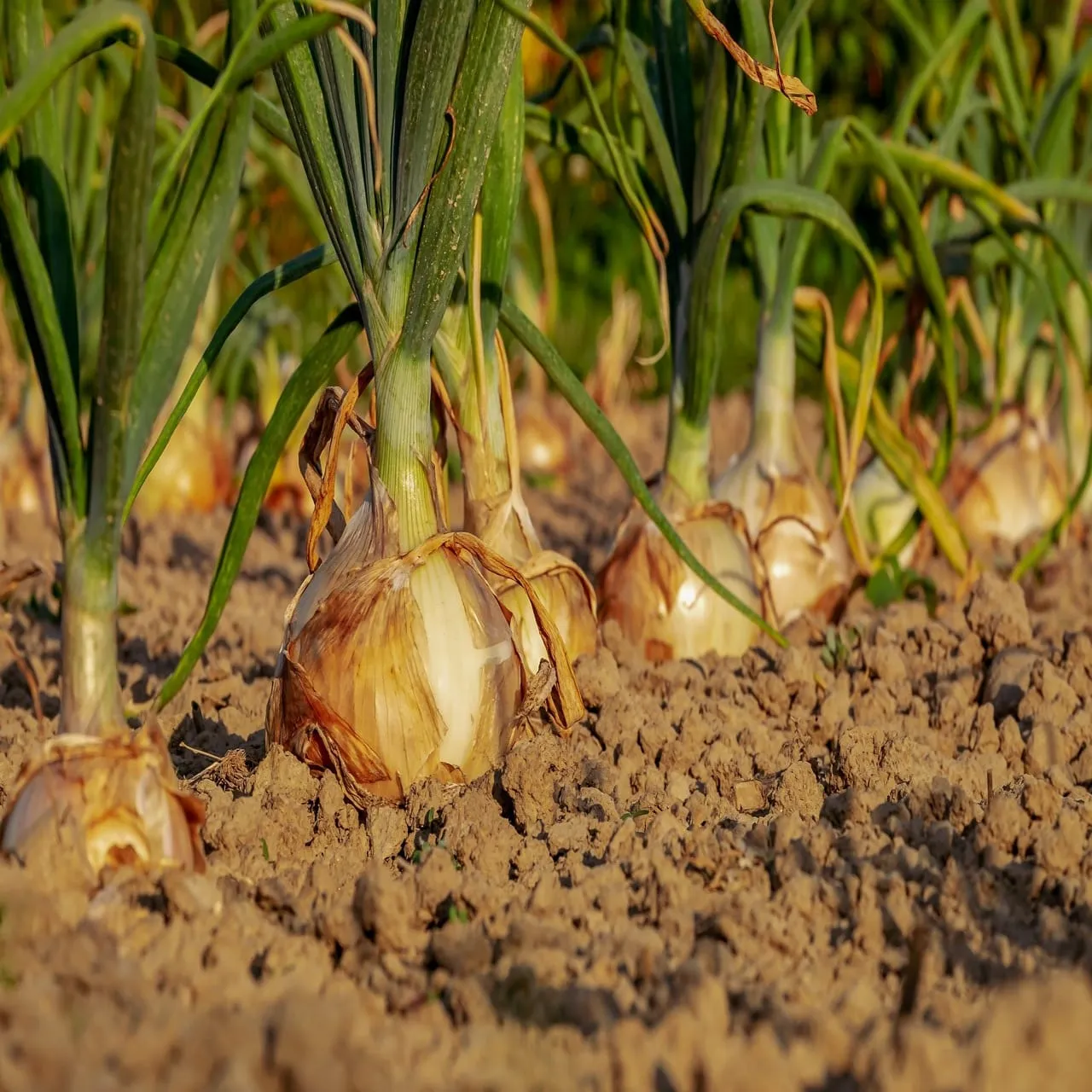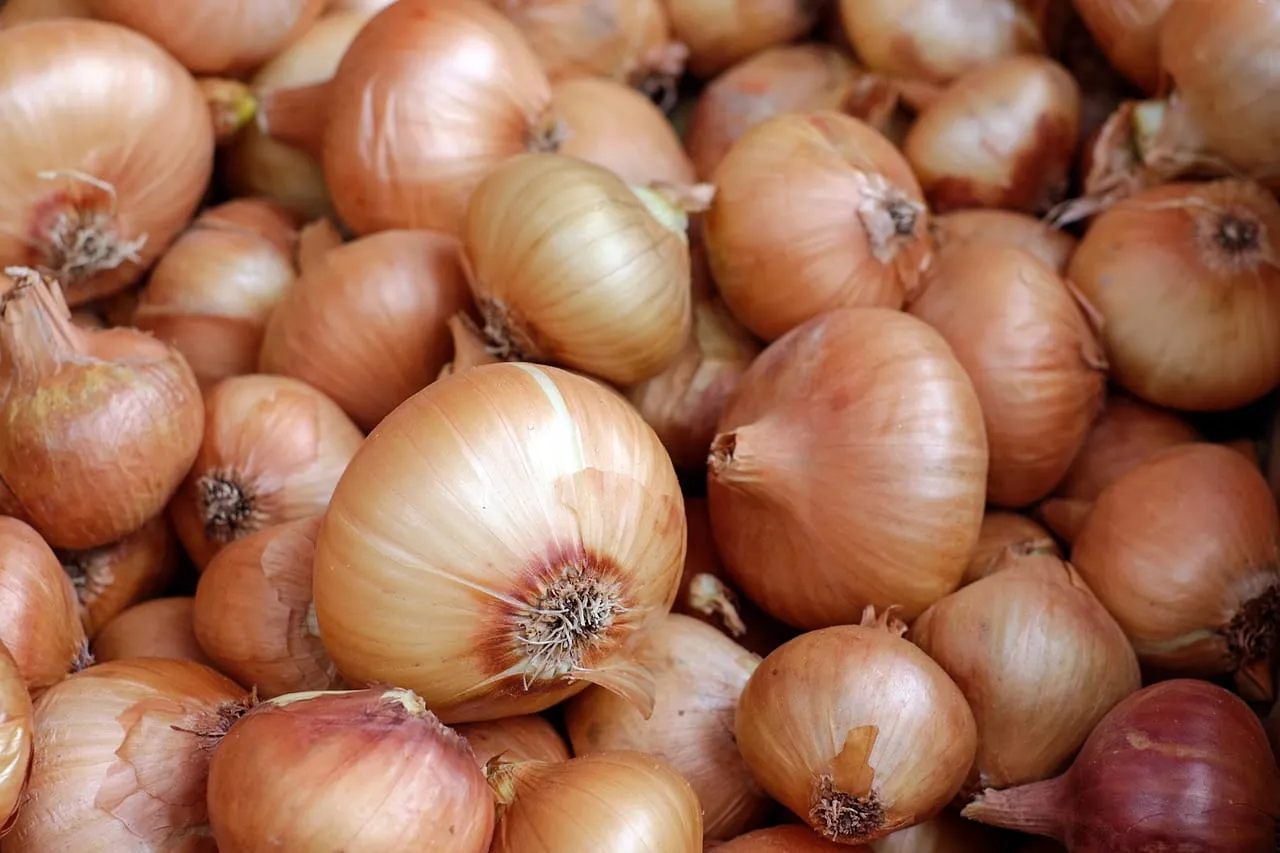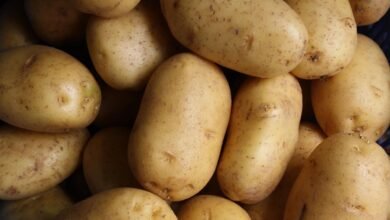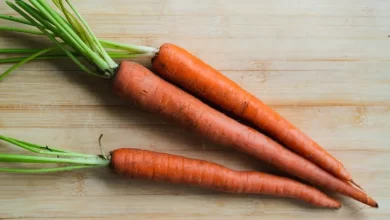The onion is a bulbous plant with crisp, fleshy layers. It is prized for its flavour and can be eaten raw or cooked. The onion is a flowering plant in the lily family. It has a close relationship to garlic, leeks, and chives. Allium cepa is its scientific name. Onions are grown in temperate climates all over the world. China, India, the United States, Egypt and Turkey are major onion producers.
- The most common type of onions are red, white and yellow.
- The onion is not a root or a stem. It’s a tunicate bulb topped with a clump of fleshy leaves. An onion is a type of modified underground stem structure. The onion plant’s bulged leaf structure at the base stores its processed food.
- As Per the reports Onions were first cultivated in Ancient Egypt 5,500 years ago, India and China 5,000 years ago, and Sumeria 4,500 years ago. With organised onion cultivation beginning approximately 3,500 BC, ancient civilizations who utilised them quickly became completely reliant on this wonderful vegetable.
- Worldwide 93,226,400 tonnes of onion is produced per year. China is the largest onion producer in the world with 23,907,509 tonnes production volume per year. The country accounts for 24.92% of total world onion production.
- The second highest producer of the crop is India with 19.415.425 tons of production. Egypt is the third highest producer of onions on the planet with 3.115.482 tons. United States is on the 4th spot.

- The major Onion producing states in India are Maharashtra, Madhya Pradesh, Karnataka, Gujarat, Rajasthan, Bihar, Haryana, Andhra Pradesh, Tamil Nadu, and West Bengal in the country. These States account for almost 90% of the total onion production of the country.
- California is the largest onion producer in the United States, and it is the only state that produces both spring and summer-harvested onions. It produced 31% of the nation’s total onion crop in 2015. Washington and Oregon are also important producers of summer-harvested onions.
- There are less than 1k farmers in the United States but holds about 125,000 acres of land that is dedicated to onion farming.
- Around 170 countries cultivate onions for domestic use, with some also growing onions for trade. On a global scale, approximately 9.2 million acres of onions are harvested each year, with approximately 8% of this harvest being traded internationally.
- Really onions are of many kinds, there are 600-920 species of onions present on the planet, making it one of the largest plant genera in the world.

- The onion was worshipped by the ancient Egyptians, who believed that its spherical shape and concentric rings represented eternity. Archeologists discovered small onions in the eye sockets of King Ramses IV’s mummy, who died in 1160 BCE, and onion bulbs were discovered in the tomb of Tutankhamen, the Egyptian boy king.
- Certain (lachrymator) compounds are released when an onion is cut, causing irritation of the nerves around the eyes (lacrimal glands). When this occurs, the “enzyme” starts working to convert the amino acids into lachrymator compounds. This form of sulfuric acid irritates the nerves around the eyes, causing them to tear.
- Onions are consumed by the average American in the amount of 22 pounds per year. This figure represents a 79% increase in onion consumption over the last three decades. The global average onion consumption is approximately 13.67 pounds of onions per person.
- Libya consumes the most onions, with an incredible average per capita intake of 66.8 pounds.
- Onions are known for their delicious flavor, but they should also be known for their numerous health benefits.Some of them are
• Improves heart health
Onions contains antioxidants and chemicals that fight inflammation, cut triglycerides, and lower cholesterol levels, all of which may lessen the risk of heart disease.Loaded With Contains Antioxidants
Antioxidants are substances that prevent oxidation, which causes cellular damage and contributes to diseases such as cancer, diabetes, and heart disease. Onions are a good source of antioxidants. In fact, they contain almost 25 distinct flavonoid kinds. antioxidants
• Fights against cancer cells-
Eating Allium vegetables, such as garlic and onions, has been associated to a lower risk of some malignancies, including stomach and colorectal cancer. According to a study of 26 research, persons who ingested the most allium vegetables were 22% less likely to be diagnosed with stomach cancer than those who consumed the least amount.Help Control Blood Sugar
• Consuming onions may aid in blood sugar regulation, which is especially important for persons with diabetes or prediabetes. A study of 42 persons with type 2 diabetes found that eating 3.5 ounces (100 grammes) of fresh red onion after four hours lowered fasting blood sugar levels by roughly 40 mg/dl.
• Some other key benefits of adding onion into your diets are They may Boost Bone Density, improve digestion and have antibacterial properties.
- The plant’s name is derived from the Latin Unio or annianus and is related to the Welsh einion, which means “anvil.” The Late Latin name Unio was given to a type of onion that resembled a single white pearl. This later became the source for the French “oignon” and, later, the English “Onion.”
- The biggest onion, cultivated by UK farmer Peter Glazebrook, weighed 8.195 kg (18 lb 1 oz). In September 2012, the enormous vegetable was weighed at the Harrogate Flower Show in North Yorkshire, UK.
- The specific location of the vegetable’s origin is unknown, although scholars have assigned it to a region that stretches from northwest India, sections of modern-day Pakistan, and Afghanistan in the west to parts of China and Central Asia in the northeast.
- When an onion root tip is examined, the onion root tip as a whole has 300 cells. There are 198 interphase cells, 45 prophase cells, 33 aral metaphase cells, 15 unanaphase cells, and 9 telophase cells among these 300 cells.
- Lasalgaon has the biggest prominent onion market in the world. The onions from Lasalgaon Market are transported to many places in India and exported to many countries on the globe.

Nutrition Facts of Onions
Here are the nutritional profile of 3.5 ounces (100 grams) of raw onions are
- Calories: 40
- Water: 89%
- Protein: 1.1 grams
- Carbs: 9.3 grams
- Sugar: 4.2 grams
- Fiber:1.7 grams
- Fat: 0.1 grams
References
- Numerical.co.in
- Atlasbig.com
- Worldatlas.com(Cultivation of mushrooms started in France)
- Gillsonions.com
- onions-usa.org
- apps1.cdfa.ca.gov
- guinnessworldrecords.com
- Study.com
- Wikipedia-Lasalgaon(Health benefits of mushroom)
- Wikipedia-Onion(Agaricus bisporus the most common mushroom type sold)






